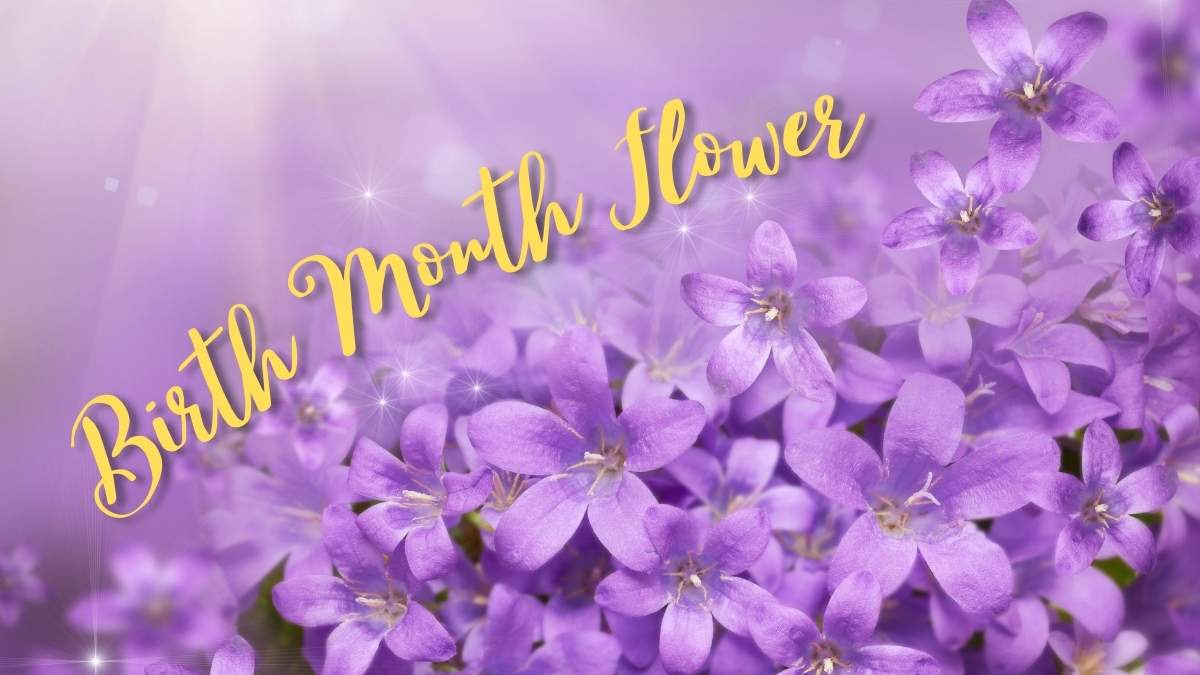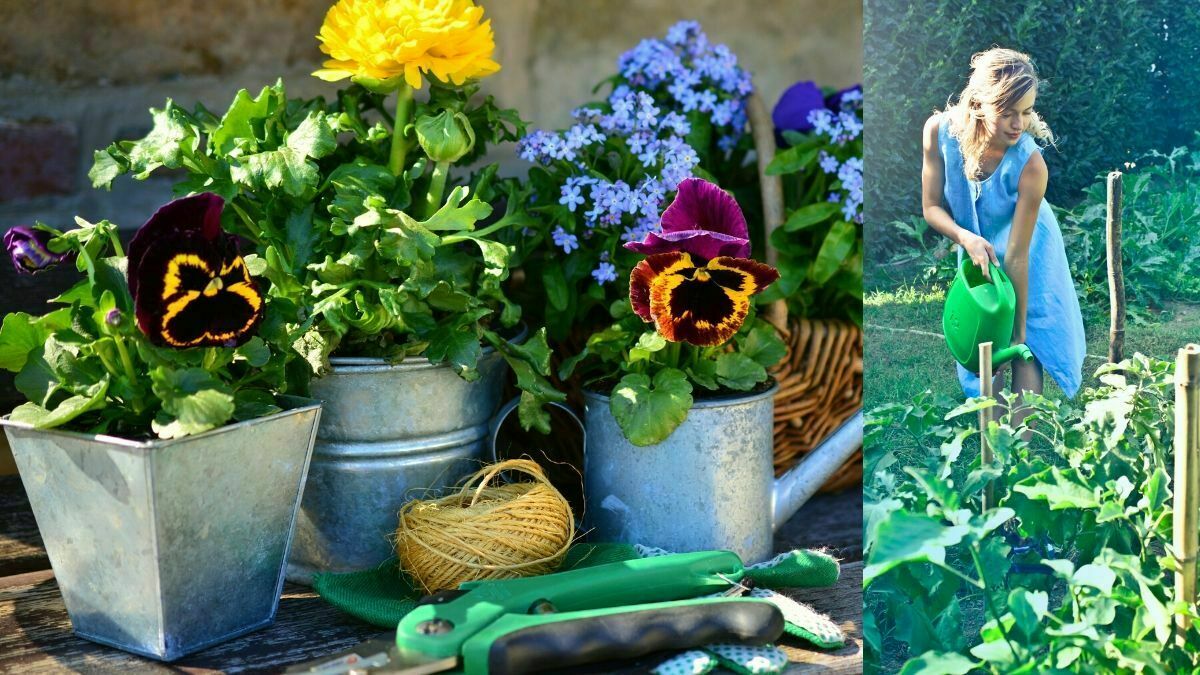Welcome to the captivating realm of the birth flowers chart, where nature’s treasures intertwine with the passage of time. Each month reveals a unique floral gem, embodying symbolic meanings and captivating allure. In this expertly crafted journey, we unravel the secrets behind the 12-month birth flowers, painting a vivid portrait of their beauty and significance. From the delicate Snowdrop, emerging as a symbol of hope in January’s wintry embrace, to the festive Holly, adorning December with its vibrant spirit, each birth month flower holds a tale of its own.
As we delve into this enchanting tapestry of blooms, prepare to be captivated by the kaleidoscope of colors, scents, and traditions woven within. We’ll explore the rich symbolism and cultural associations that have entwined these blossoms with our lives. Embark with us on this odyssey of nature’s poetry as we navigate the seasons and uncover the hidden meanings behind each birth flower.
With each turn of the page, you’ll witness the dainty Daffodil announcing the arrival of spring, the majestic Rose unfolding its petals in June’s embrace, and the vibrant Marigold casting its spell during October’s harvest. From ancient folklore to modern celebrations, these flowers have inspired artists, gardeners, and dreamers alike.
Let’s learn about the realm of the birth flower by month, unlocking their secrets and embracing the magic that unfolds throughout the year. Let us be your guide through this blooming wonderland, where nature’s artistry meets the milestones of our lives. Prepare to immerse yourself in the captivating stories and breathtaking beauty that lie within the 12-month birth flower chart.
1. January birth flower: The Snowdrop’s Serenity
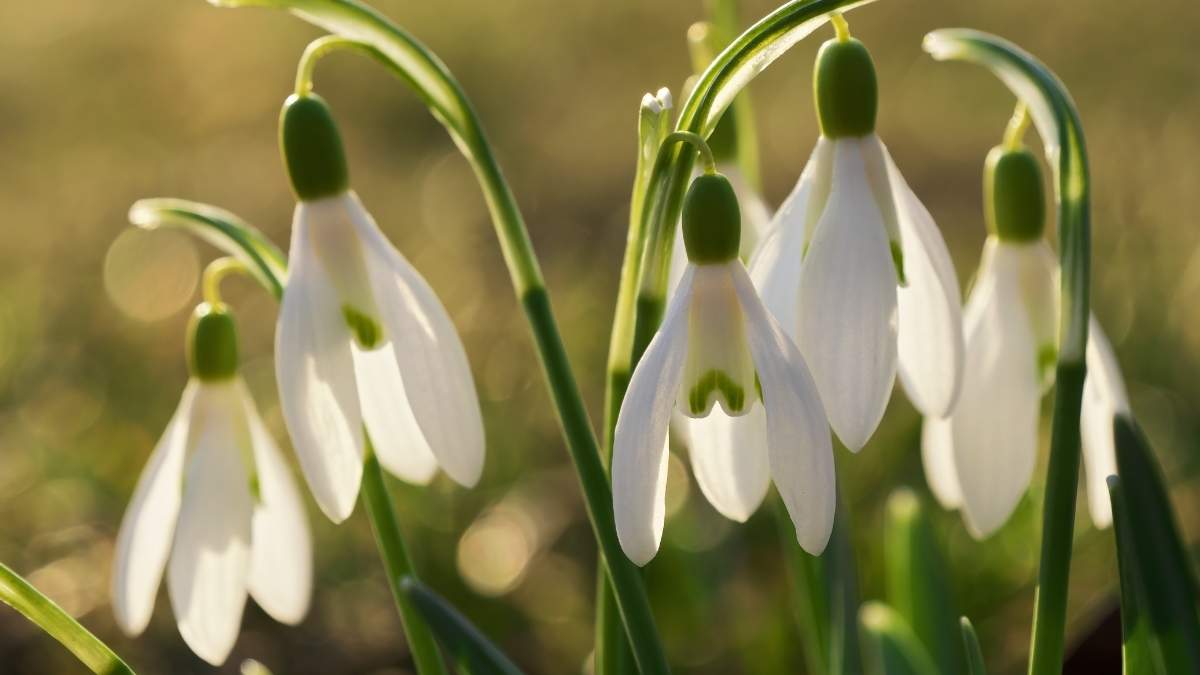
In the frosty welcome of January, a delicate bloom emerges, symbolizing hope and serenity amidst the winter chill. The Snowdrop gracefully announces the arrival of a new year, captivating hearts with its pristine beauty and subtle fragrance. As we explore the significance of the Snowdrop, let us immerse ourselves in its symbolism, cultural connections, and botanical wonders.
The Snowdrop, scientifically known as Galanthus, belongs to the Amaryllidaceae family. This small, perennial bulb flower is characterized by its elegant white petals, delicately nodding downward like droplets of snow. Known for its resilience and ability to bloom even in the harshest winter conditions, the Snowdrop serves as a beacon of hope and renewal.
The symbolism of the Snowdrop extends beyond its physical attributes. Often associated with purity and innocence, this petite flower carries a sense of serenity and tranquility. It serves as a reminder of the potential for growth and beauty, even in the midst of challenging circumstances. The Snowdrop’s emergence from the cold, barren ground symbolizes the triumph of life over adversity, offering solace and a promise of brighter days to come.
Culturally, the Snowdrop holds various meanings and associations. In many European traditions, this flower is considered a symbol of hope, new beginnings, and the anticipation of spring. It is often exchanged as a gesture of goodwill and best wishes for the year ahead. In folklore, the Snowdrop is believed to possess protective properties, warding off evil spirits and bringing good fortune to those who cultivate it.
Within the realm of botany, the Snowdrop is a fascinating specimen. Its scientific name, Galanthus, is derived from the Greek words “gala,” meaning milk and “anthos” meaning flower, referencing the flower’s milky-white petals. There are several species and cultivars of Snowdrops, each with its own unique charm and characteristics. From the classic Galanthus nivalis to the rarer Galanthus elwesii, enthusiasts and collectors are drawn to the intricate patterns and subtle variations within this seemingly simple flower.
When it comes to gardening, Snowdrops is a favorite among enthusiasts, heralding the arrival of spring and injecting life into dormant winter landscapes. These hardy bulbs thrive in moist, well-drained soil and partial shade. Their early blooming nature makes them a valuable addition to winter gardens, where they create a carpet of white, offering a glimpse of hope and renewal.
January’s birth flower, the Snowdrop, enchants us with its serene beauty, resilience, and rich symbolism. Its delicate blossoms speak of hope, purity, and the promise of new beginnings. From its cultural significance to its botanical wonders, the Snowdrop captivates hearts and serves as a gentle reminder that even in the coldest of times, there is always room for growth, beauty, and the emergence of brighter days ahead.
2. February birth flower: The Enchanting Violet
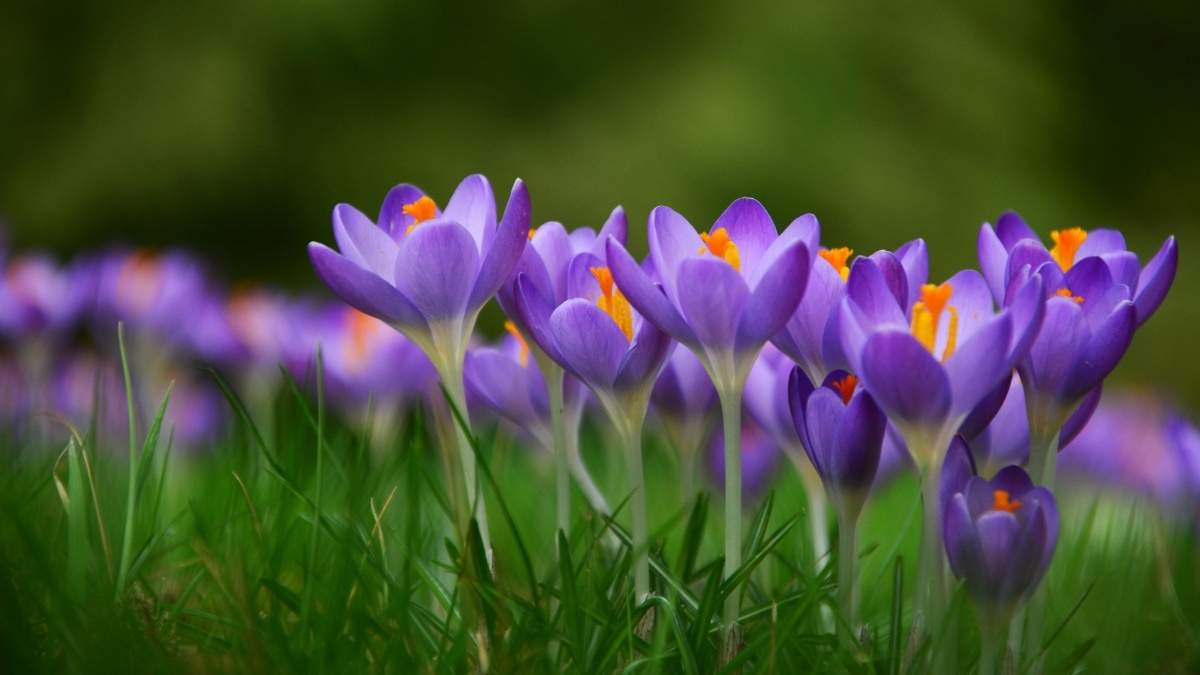
As February unfolds, a captivating flower graces the world with its enchanting presence – the Violet. With its vibrant hues and delicate petals, the Violet captures hearts and stirs the imagination. Here is the significance, symbolism, and cultural associations of this bewitching bloom of February’s birth flower.
The Violet, scientifically known as Viola, is a small yet captivating flower that belongs to the Violaceae family. February’s birth flower casts a spell with its vibrant and diverse array of colors, ranging from deep purples to soft pastels. Its delicate petals, often marked with intricate patterns and veining, make the Violet a true marvel of nature.
The Allure of the Violet:
The Violet’s allure lies not only in its visual beauty but also in its intoxicating fragrance. The blossoms release a sweet and delicate scent that evokes nostalgia and adds a touch of romance to any setting. Whether found in wild meadows or cultivated gardens, Violets exude an enchanting charm that captivates admirers around the world.
Symbolism and Meanings:
Violets have been revered for centuries and carry diverse symbolic meanings. They are often associated with humility, modesty, and innocence. These small flowers embody the delicate beauty found in simplicity, reminding us of the power of subtlety and gentleness. Violets also symbolize faithfulness, loyalty, and everlasting love, making them a popular choice in romantic gestures.
Cultural Significance and Folklore:
Throughout history, Violets have held special significance in various cultures and folklore. In ancient Greece, these flowers were linked to the goddess Io and were believed to possess magical properties. In Shakespearean literature, Violets were mentioned as a symbol of faithfulness and remembrance. Additionally, Violets have been associated with spiritual and mystical realms, often representing connections with the divine.
Varieties and Botanical Marvels:
The world of Violets is vast and diverse, encompassing numerous species and hybrids. From the classic Viola odorata with its captivating fragrance to the striking Viola cornuta adorned with vibrant blooms, each variety offers its own unique charm. Botanists and enthusiasts continue to discover new species and cultivate hybrid varieties, expanding the kaleidoscope of colors and patterns within the Violet family.
Cultivating Violets: Gardening Tips and Techniques:
Gardening enthusiasts are drawn to the beauty and adaptability of Violets. These versatile flowers can thrive in various conditions, from shaded woodland gardens to containers on sunny balconies. By providing well-drained soil, adequate moisture, and the right amount of sunlight, gardeners can cultivate Violets and enjoy their captivating blooms throughout the year. Propagation techniques, such as seed sowing or division, allow for the expansion of Violet gardens and the sharing of their enchanting presence with others.
3. March birth flower: The Dainty Daffodil
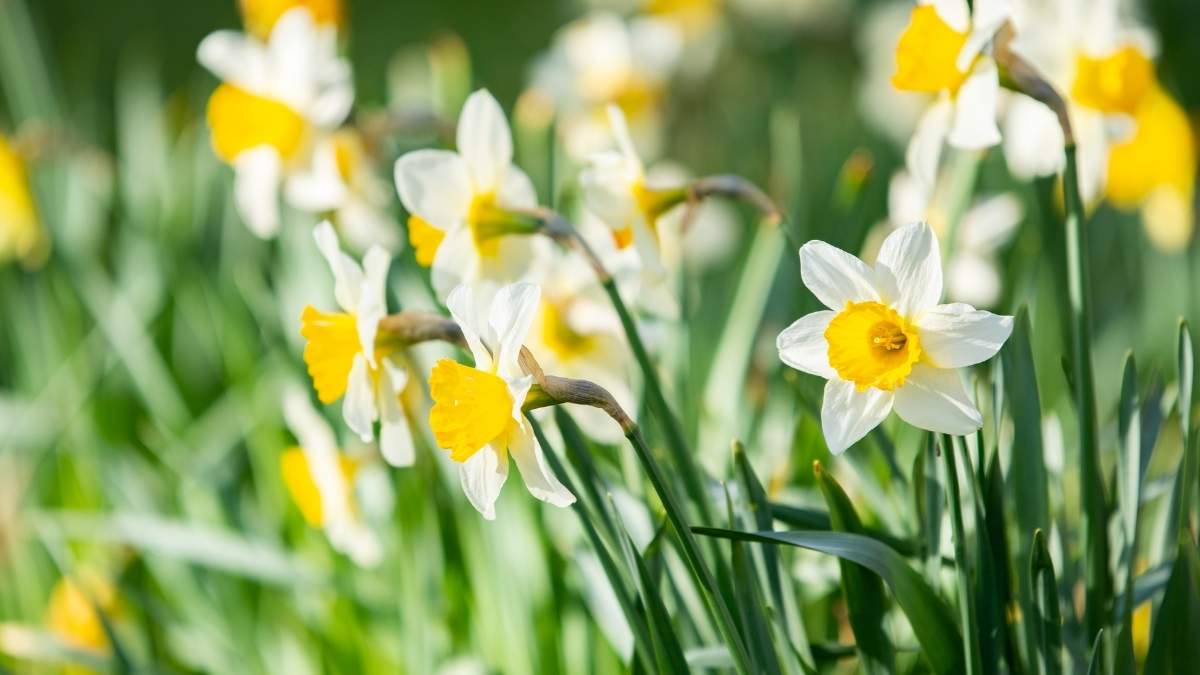
As winter surrenders to the gentle embrace of spring, March heralds the arrival of a cheerful and vibrant bloom – the Daffodil. With its sunny disposition and delicate charm, the Daffodil captivates hearts and symbolizes the awakening of nature’s beauty. Let’s discover the significance, symbolism, and enchanting allure of March’s birth flower.
The Daffodil, scientifically known as Narcissus, belongs to the Amaryllidaceae family and boasts a radiant display of blossoms. March’s birth flower unfolds its petals in an array of hues, ranging from vibrant yellows to delicate whites and oranges. This dainty flower, with its distinct trumpet-shaped corona and slender green stems, brings a burst of joy and anticipation as it graces gardens, fields, and floral arrangements.
The Radiance of the Daffodil:
The Daffodil’s radiant presence serves as a delightful harbinger of spring. It’s sunny disposition and cheerful blooms bring a sense of renewal and optimism after the cold winter months. The distinct trumpet-shaped corona, surrounded by a ring of petals, adds an elegant touch to its overall appearance. As Daffodils emerge from the earth, they infuse landscapes with their vibrant colors, illuminating gardens with their unique radiance.
Symbolism and Meanings:
Daffodils are renowned for their symbolic significance, embodying various meanings across cultures. Often associated with rebirth and new beginnings, these flowers symbolize hope, resilience, and the arrival of spring. Their emergence from the dormant earth represents the triumph of life over adversity, reminding us of the beauty that can emerge from even the harshest conditions. Daffodils also symbolize friendship, making them a popular choice for gifts and joyful celebrations.
Cultural Significance and Traditions:
Daffodils hold cultural significance in many traditions and celebrations around the world. In some cultures, they are associated with the festival of Easter and are considered a symbol of Christ’s resurrection and the promise of eternal life. In the United Kingdom, the Daffodil is an emblem of the Cancer Society, representing hope and support for those affected by the disease. Additionally, Daffodil festivals and parades are held in various countries, showcasing the beauty and joy that these flowers bring.
Botanical Marvels and Varieties:
The world of Daffodils is a botanical marvel, boasting a diverse range of shapes, sizes, and colors. From the classic yellow Trumpet Daffodils to the delicate white Poeticus Daffodils adorned with red-rimmed cups, each variety offers its own unique charm. Botanists and hybridizers have continuously expanded the palette of Daffodils, resulting in a breathtaking display of colors and patterns that captivate gardeners and enthusiasts alike.
Cultivating Daffodils: Gardening Tips and Techniques:
Gardening enthusiasts find joy in cultivating Daffodils, as they are relatively easy to grow and provide a stunning display year after year. These hardy bulbs thrive in well-drained soil and prefer sunny or partially shaded locations.
By carefully selecting and planting Daffodil bulbs in the autumn, gardeners can enjoy their vibrant blooms in the early days of spring. Proper care, including deadheading and timely division, helps maintain the health and vigor of Daffodil plants for years to come.
1. Selecting Daffodil Bulbs:
When embarking on the journey of cultivating Daffodils, it’s essential to choose high-quality bulbs for optimal growth and vibrant blooms. Look for bulbs that are firm, free from blemishes, and of a decent size. Varieties with large, plump bulbs often produce more robust flowers. Additionally, consider the desired bloom time and select early, mid, or late-season Daffodil varieties accordingly to create a prolonged display of color.
2. Planting Daffodil Bulbs:
Planting Daffodil bulbs in the autumn sets the stage for a spectacular spring show. Select a well-drained location that receives ample sunlight or partial shade. Prepare the soil by removing weeds and loosening it to facilitate proper root development. Plant the bulbs at a depth of two to three times their size, with the pointed end facing upward. Space the bulbs according to the variety’s recommended spacing guidelines, allowing room for growth and natural division.
3. Providing Adequate Water and Nutrients:
Daffodils are generally low-maintenance plants, requiring moderate watering. Once the bulbs are planted, water them thoroughly to promote root establishment. During periods of prolonged dryness, supplement rainfall with regular watering to keep the soil moist but not waterlogged. Avoid overwatering, as excessive moisture can lead to bulb rot. Applying a balanced fertilizer in early spring, when shoots emerge, can provide an extra boost of nutrients to support healthy growth and blooming.
4. Deadheading and Timely Division:
To maintain the aesthetics and energy of Daffodil plants, deadheading spent blooms is essential. Once the flowers fade, remove the withered blooms by cutting the stem just above the basal foliage. This practice prevents the plant from diverting energy into seed production and encourages bulb strength for the following year. After several years, when the clumps become overcrowded, consider dividing the bulbs in late summer or early autumn. Gently lift the bulbs, separate them, and replant them at the appropriate spacing to allow for renewed growth and abundant blooms.
5. Dealing with Pests and Diseases:
Daffodils are relatively resistant to pests and diseases. However, occasional encounters with pests like aphids or diseases like bulb rot may occur. Regular inspection of the plants and prompt action are crucial in mitigating any issues. Remove and dispose of any affected plant parts and consider using organic pest control methods or contacting a local gardening expert for guidance.
4. April birth flower: The Blooming Daisy
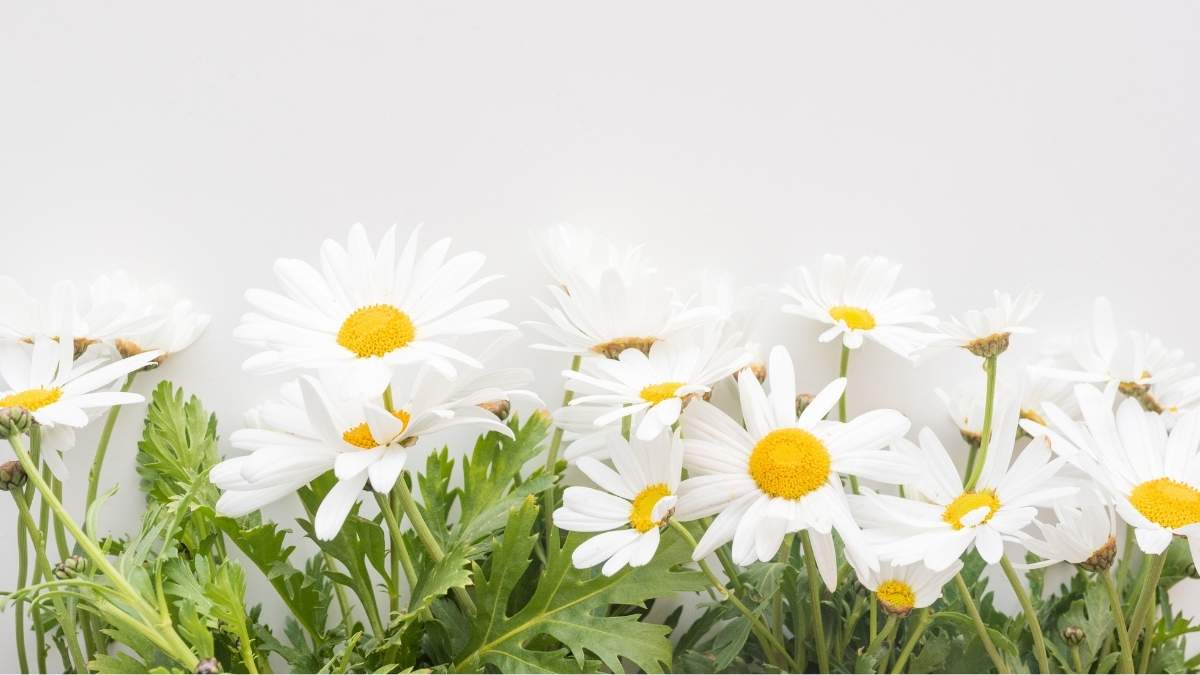
As April emerges with its gentle warmth and blossoming landscapes, a charming and resilient flower takes center stage – the Daisy. With its timeless beauty and joyful demeanor, Daisy symbolizes purity, innocence, and the abundant spirit of spring. Explore the significance, symbolism, and enchanting allure of April’s birth flower here.
The Daisy, scientifically known as Bellis perennis, belongs to the Asteraceae family and graces April with its blooming presence. This perennial flower enchants with its simplicity and delicate elegance. With its radiating petals and sunny center, the Daisy captures the essence of spring’s renewal, spreading joy and serenity wherever it grows.
The Delight of the Daisy:
Daisy’s unassuming beauty is a source of delight for many. Its cheerful blooms, composed of layers of delicate petals surrounding a vibrant center, create a captivating display of color and symmetry. Daisies have a timeless charm that transcends trends, making them a beloved choice for floral arrangements, garden borders, and joyful celebrations.
Symbolism and Meanings:
Daisies hold deep symbolic meanings that resonate across cultures and generations. They are often associated with purity, innocence, and new beginnings. Daisy’s pristine white petals, coupled with its golden center, evoke a sense of purity and clarity of heart. These flowers also symbolize loyal love, faithfulness, and the joyful appreciation of life’s simple pleasures.
Cultural Significance and Folklore:
Throughout history, Daisies have held cultural significance and appeared in folklore and legends. In ancient Roman mythology, Daisies were associated with the goddess Venus, representing love and beauty. In traditional folk beliefs, Daisies were believed to possess healing properties and were used in herbal remedies. Furthermore, Daisies have been cherished for their ability to bring good fortune and ward off negative energies.
Botanical Marvels and Varieties:
The world of Daisies is diverse, showcasing a variety of species and cultivars. From the classic Bellis perennis with its white petals and golden centers to the colorful Gerbera Daisies that offer a vibrant display of hues, each variety carries its own unique charm. Botanists and hybridizers continue to expand the range of colors and forms, allowing for a delightful selection of Daisies to adorn gardens and floral arrangements.
Cultivating Daisies: Gardening Tips and Techniques:
Gardening enthusiasts find joy in cultivating Daisies, as they are relatively easy to grow and provide a rewarding display of blooms. Daisies thrive in well-drained soil and prefer sunny locations, although some varieties tolerate partial shade.
By sowing seeds or planting young seedlings in early spring, gardeners can enjoy the cheerful presence of Daisies throughout the growing season. Regular deadheading and proper care, such as adequate watering and occasional fertilization, ensure healthy growth and abundant blooms.
April’s birth flower, Daisy, encapsulates the essence of spring’s renewal and the joyful spirit of new beginnings. Its timeless beauty, symbolic meanings, and diverse varieties make it a beloved bloom in gardens, traditions, and floral art. Embrace the delight of Daisy and let its radiant presence inspire you to cherish the purity, innocence, and abundant joys of life.
5. May birth flower: The Majestic Lily of the Valley
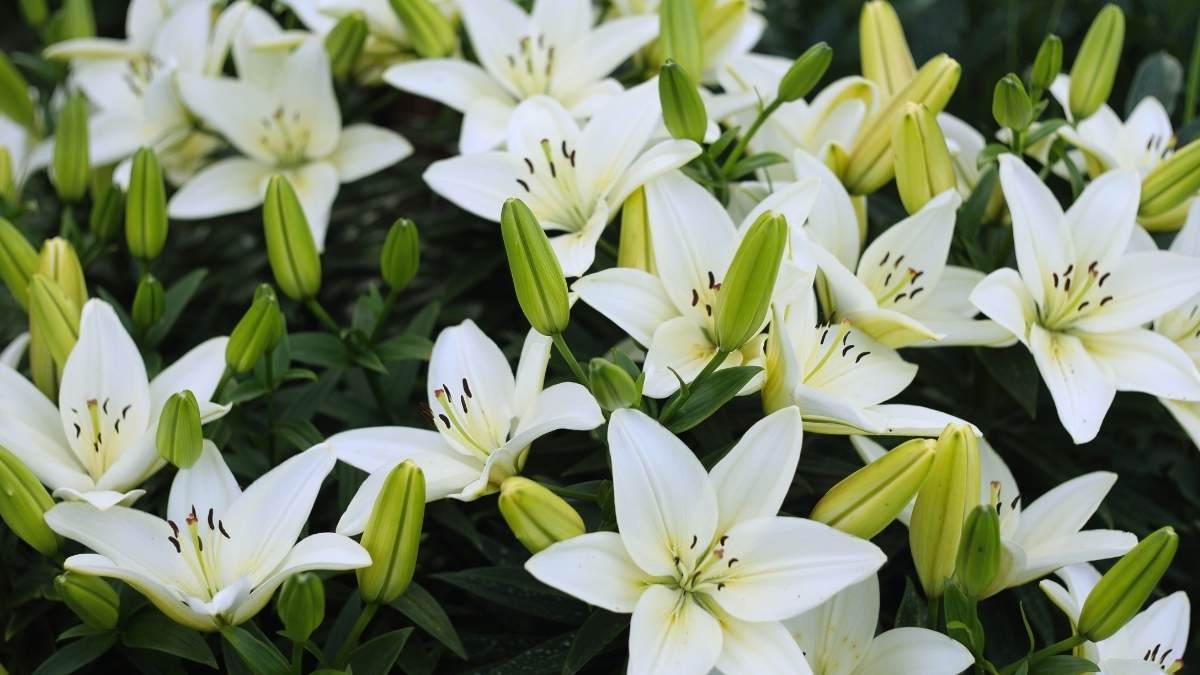
As the days grow longer and nature bursts forth in a symphony of colors, May brings forth a regal and captivating bloom – the Lily of the Valley. With its delicate beauty and enchanting fragrance, the Lily of the Valley graces gardens and bouquets with its majestic presence. Here you can discover the meaning, symbolism, and timeless allure of May’s birth flower.
The Lily of the Valley, scientifically known as Convallaria majalis, belongs to the Asparagaceae family and emerges in May with its exquisite beauty. This perennial flower captivates with its clusters of delicate, bell-shaped blossoms that hang gracefully from slender stalks. With its intoxicating fragrance and timeless elegance, the Lily of the Valley enchants hearts and invokes a sense of wonder.
The Elegance of the Lily of the Valley:
The Lily of the Valley exudes an understated elegance that is both captivating and enchanting. Its slender stems rise from a carpet of lush, green foliage adorned with clusters of tiny, bell-shaped flowers. The pure white petals and delicate form of the Lily of the Valley create a sense of grace and refinement, making it a favorite choice for bridal bouquets and elegant floral arrangements.
Symbolism and Meanings:
The Lily of the Valley holds rich symbolism and profound meanings across cultures. Often associated with purity, innocence, and love, these flowers evoke a sense of gentleness and heartfelt emotions. In many traditions, the Lily of the Valley is considered a symbol of luck and happiness, signifying the return of joy and prosperity. Its fragrant blooms are also associated with the arrival of spring, rejuvenation, and the promise of new beginnings.
Cultural Significance and Traditions:
Throughout history, the Lily of the Valley has held cultural significance and has been cherished in various traditions. In Christian folklore, the flower is believed to have sprung from the tears of the Virgin Mary, symbolizing her purity and sweetness. It is often associated with the May Day celebration, where it is used to create delicate garlands and crowns, signifying the arrival of spring and the renewal of life.
Botanical Marvels and Varieties:
The world of the Lily of the Valley encompasses several varieties, each with its own unique characteristics and beauty. While Convallaria majalis is the most common species, variations in flower color, size, and fragrance can be found. Some cultivars feature pink or double flowers, offering additional charm and diversity. Regardless of the variety, all Lily of the Valley plants shares a timeless allure and the unmistakable fragrance that sets them apart.
Cultivating Lily of the Valley: Gardening Tips and Techniques:
Gardening enthusiasts are drawn to the allure of cultivating the Lily of the Valley in their own green spaces. These delicate blooms thrive in shaded areas with moist, well-drained soil. By selecting healthy pips or rhizomes, gardeners can establish a bed or container garden of Lily of the Valley, enjoying their exquisite beauty and intoxicating fragrance. Adequate watering, occasional fertilization, and careful attention to soil conditions ensure the successful growth and blooming of these majestic flowers.
6. June birth flower: The Radiant Rose
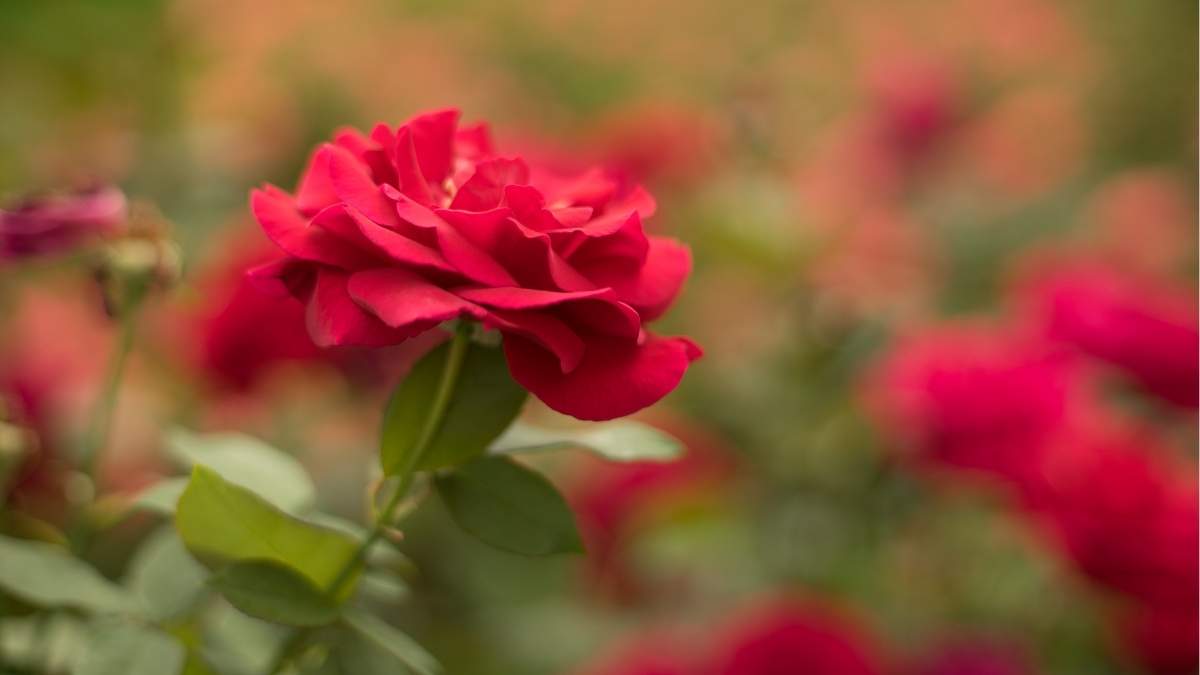
As the sun reaches its zenith and nature flourishes in full bloom, June unveils a timeless and captivating bloom – the Rose. With its exquisite beauty, intoxicating fragrance, and rich symbolism, the Rose reigns as the queen of flowers. Here is all you need to know about enchanting allure of June’s birth flower.
The Rose, scientifically known as Rosa, belongs to the Rosaceae family and graces June with its radiant presence. This perennial flower has captivated hearts for centuries with its velvety petals, captivating colors, and bewitching fragrance. From the grandeur of its blooms to the intricate details of its petals, the Rose embodies love, passion, and the timeless allure of the natural world.
The Beauty of the Rose:
The Rose stands as an epitome of beauty and elegance. Its velvety petals, delicate curves, and exquisite color variations create a sight to behold. From the classic red roses symbolizing passionate love to the soft pastels and vibrant hues that evoke joy and admiration, the Rose offers a stunning array of choices. Whether in a floral arrangement or gracing a garden, its presence evokes a sense of awe and delight.
Symbolism and Meanings:
Roses hold profound symbolism and carry diverse meanings across cultures and traditions. Universally recognized as a symbol of love and romance, they represent affection, devotion, and desire. Each color of the Rose holds its own symbolism, with red conveying passionate love, white representing purity and innocence, yellow symbolizing friendship and joy, and pink embodying grace and admiration. The Rose also symbolizes beauty, transformation, and the delicate balance between thorns and petals.
Cultural Significance and Traditions:
Throughout history, Roses have played significant roles in art, literature, and cultural traditions. In ancient Greek and Roman mythology, the Rose was associated with goddesses of love and beauty, such as Aphrodite and Venus. In many cultures, the Rose is a symbol of femininity, grace, and refinement. It is often used at weddings, anniversaries, and other special occasions, symbolizing love, commitment, and celebration.
Botanical Marvels and Varieties:
The world of Roses is a botanical marvel, boasting a staggering array of varieties, forms, and fragrances. From hybrid teas with their classic bud shape to floribundas with clusters of blooms, climbers that grace trellises, and shrub roses that offer profusion, each category presents its own unique charm. The range of colors, from deep reds to delicate pinks, vibrant yellows, and pristine whites, ensures a Rose for every preference and occasion.
Cultivating Roses: Gardening Tips and Techniques:
Cultivating Roses is a rewarding endeavor that requires careful attention and nurturing. These beautiful flowers thrive in well-drained soil, ample sunlight, and proper pruning techniques. Selecting suitable varieties, preparing the soil, and providing adequate water and nutrients are crucial for their healthy growth and abundant blooms. Additionally, understanding the different pruning methods, protecting against pests and diseases, and proper deadheading ensure the longevity and vitality of Rose plants.
7. July birth flower: The Lively Larkspur
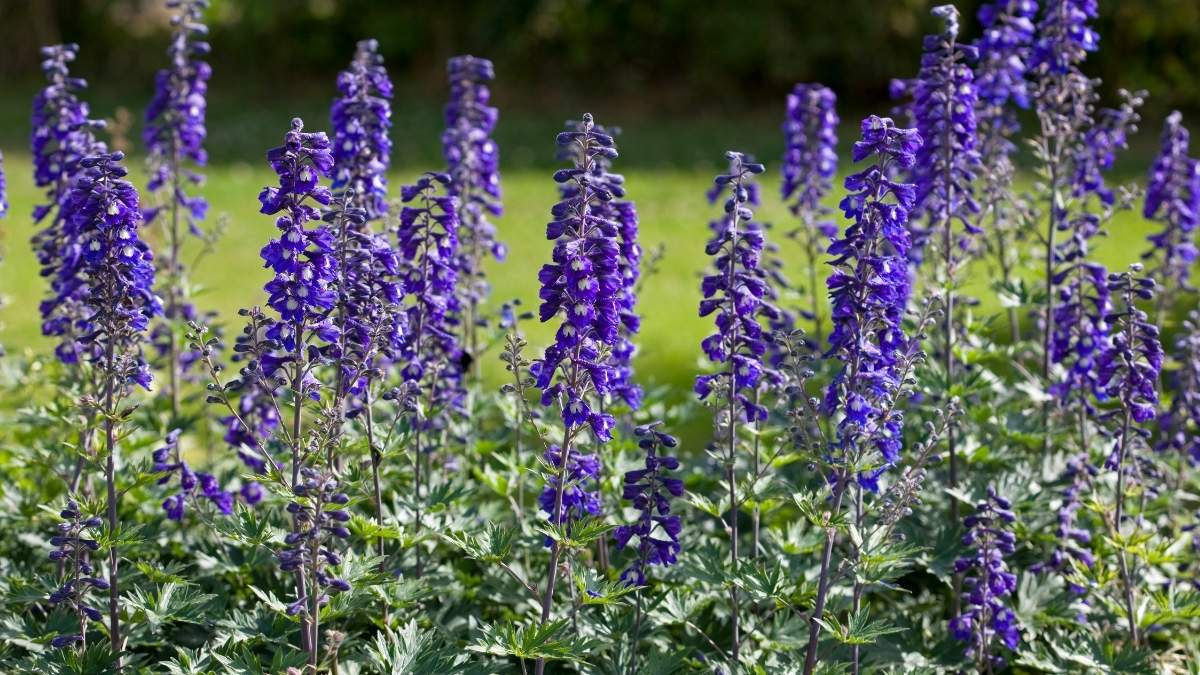
As the summer sun blazes across the sky and nature dances to its lively rhythm, July reveals a vibrant and enchanting bloom – the Larkspur. With its tall, graceful spikes and a kaleidoscope of colors, the Larkspur brings energy and liveliness to the garden. Here is the captivating allure of July’s birth flower.
The Larkspur, scientifically known as Consolida, belongs to the Ranunculaceae family and graces July with its lively presence. This perennial flower delights with its tall, slender spikes adorned with an array of vibrant, spurred blossoms. From deep blues and purples to pinks, whites, and pastels, the Larkspur’s diverse color palette and exquisite form add a touch of elegance and vibrancy to summer landscapes.
The Elegance of Larkspur:
The Larkspur exudes an elegant charm that captures attention. Its tall, slender stems, adorned with densely clustered flowers, create a striking vertical accent in gardens and floral arrangements. The intricate spur-like blossoms and delicate foliage give the Larkspur a graceful and sophisticated appearance, making it a favorite choice for adding height and drama to flower beds and bouquets.
Symbolism and Meanings:
Larkspurs hold symbolic meanings that resonate with their vibrant presence. These flowers are often associated with lightness, levity, and joyousness. Their lively colors and whimsical form evoke a sense of celebration and merriment. Larkspurs also symbolize openness to new experiences, a carefree spirit, and the ability to embrace life’s pleasures with enthusiasm.
Cultural Significance and Traditions:
Larkspurs have a cultural significance and have been valued in various traditions. In Victorian flower language, Larkspurs represented an open heart and a desire for laughter and lightheartedness. These flowers are often used in summer weddings and celebrations, bringing a sense of joy and festivity to the occasion. Larkspurs have also been associated with protection against negativity and were believed to ward off evil spirits.
Botanical Marvels and Varieties:
The world of Larkspurs is filled with botanical marvels, showcasing a variety of species and cultivars. From the classic Consolida ambigua with its vibrant blue hues to the subtle pastels of Consolida ajacis, each variety offers its own unique beauty. Larkspurs are known for their exceptional cut flower qualities, retaining their freshness and vibrant colors for extended periods. Their stunning spikes make them a standout choice in both garden beds and floral arrangements.
Cultivating Larkspur: Gardening Tips and Techniques:
Growing Larkspurs in your own garden can be a rewarding endeavor. These flowers thrive in well-drained soil and prefer a sunny location with some afternoon shade to protect them from the scorching heat. Sowing seeds directly in the garden in early spring or late summer allows for successful germination and healthy growth. Adequate spacing, regular watering, and providing support for taller varieties ensure sturdy plants and bountiful blooms.
8. August birth flower: The Glorious Gladiolus
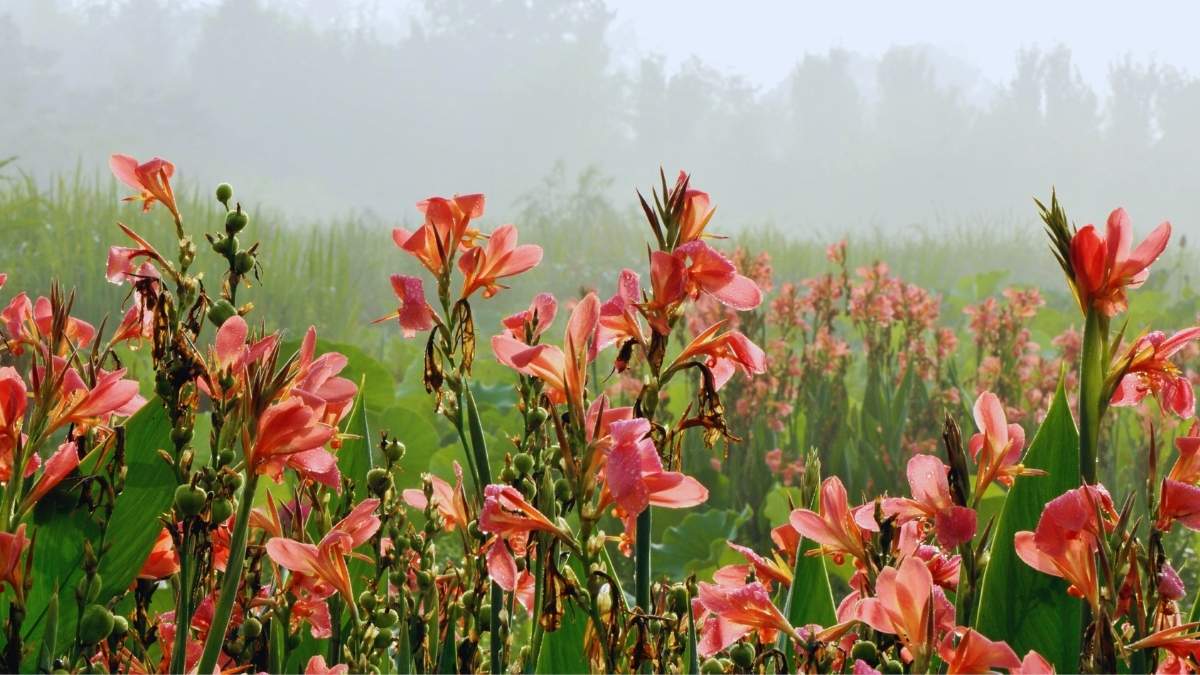
As the sun reaches its peak and the summer days unfold in a blaze of warmth, August introduces a flower that commands attention with its majestic beauty – the Gladiolus. With its tall, majestic spikes and stunning array of colors, the Gladiolus stands as a symbol of strength, elegance, and celebration. Let’s read more about August’s birth flower here.
The Gladiolus, scientifically known as the Gladiolus genus, graces August with its glorious presence. This perennial flower captivates with its tall, sturdy spikes adorned with multiple blooms. From vibrant reds and oranges to soft pinks, purples, and whites, the Gladiolus showcases a remarkable color spectrum that illuminates gardens and floral arrangements with its radiant allure.
The Magnificence of the Gladiolus:
The Gladiolus exudes a sense of magnificence and grandeur. Its tall, erect spikes, often reaching several feet in height, create a striking visual impact in any setting. The multiple blooms that adorn each spike unfurl gradually, adding a touch of anticipation and drama to their display. From formal flower beds to extravagant bouquets, the Gladiolus commands attention with its regal presence.
Symbolism and Meanings:
Gladiolus holds symbolic meanings that reflect its impressive stature. The flower symbolizes strength, integrity, and moral character. Its name is derived from the Latin word “gladius,” meaning sword, which represents the Gladiolus’ association with gladiators and the idea of standing strong in the face of challenges. The Gladiolus also symbolizes sincerity, passion, and the pursuit of personal growth.
Cultural Significance and Traditions:
Throughout history, the Gladiolus has held cultural significance and has been celebrated in various traditions. In some cultures, the Gladiolus is associated with the August birthstone, peridot, creating a harmonious connection between the flower and the month. In floral arrangements, Gladiolus often takes center stage, signifying celebrations, achievements, and milestones. The flower’s vibrant colors make it a popular choice for special occasions, conveying a sense of joy, admiration, and triumph.
Botanical Marvels and Varieties:
The world of Gladiolus encompasses an impressive range of botanical marvels and captivating varieties. With over 250 species and countless hybrids, Gladiolus offers an abundant selection of colors, sizes, and forms. From large-flowered varieties that make a dramatic statement to miniature versions that grace borders and containers, there is a Gladiolus for every preference and garden style. Noteworthy varieties include the Grandiflorus hybrids, Primulinus hybrids, and Nanus hybrids, each with its own unique charm.
Cultivating Gladiolus: Gardening Tips and Techniques:
Cultivating Gladiolus in your own garden allows you to experience the beauty and grandeur firsthand. These flowers thrive in well-drained soil, ample sunlight, and regular watering. Planting corms in early spring and staggering their planting times every two weeks extends the blooming period. Stake taller varieties to support the weight of their majestic spikes and deadhead spent blooms to encourage continuous flowering. With proper care and attention, Gladiolus will reward you with a glorious display of color and elegance.
August’s birth flower, the Gladiolus, reigns as a symbol of strength, magnificence, and celebration. Its tall spikes and vibrant blooms illuminate gardens and floral arrangements, captivating hearts and evoking a sense of admiration and triumph.
9. September birth flower: The Charming Aster
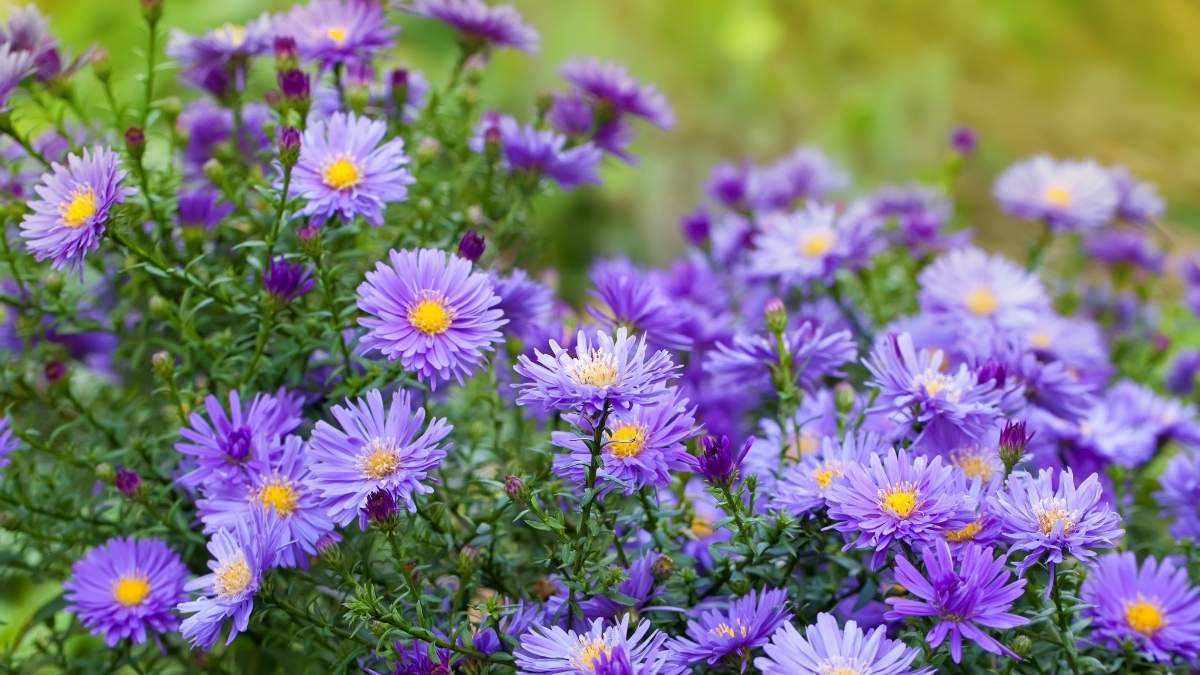
As summer begins to wane and the days transition into the embrace of autumn, September reveals a flower that enchants with its delicate beauty – the Aster. With its star-shaped blooms and a delightful range of colors, the Aster stands as a symbol of charm, elegance, and the changing seasons. Keep reading for the enchanting allure of September’s birth flower.
The Aster, scientifically known as Asteraceae, graces September with its charming presence. This dainty yet resilient flower captures attention with its abundant, star-shaped blooms that dance in the autumn breeze. From soft pastels to vibrant purples, pinks, and whites, the Aster offers a delightful color palette that brings a touch of elegance to gardens and floral arrangements during the transition from summer to fall.
The Grace of the Aster:
The Aster exudes grace and elegance with its delicate form and intricate blooms. Each flower features a cluster of slender petals that radiate from a vibrant center, resembling a celestial star. The dainty nature of the Aster adds a touch of ethereal beauty to any setting, making it a popular choice for bouquets, borders, and even flower crowns.
Symbolism and Meanings:
Asters hold symbolic meanings that reflect their enchanting presence. These flowers are often associated with love, patience, and daintiness. The name “Aster” is derived from the Greek word for “star,” representing their star-like appearance. Asters also symbolize wisdom, protection, and positive energy. In some cultures, they are believed to ward off negative influences and bring good fortune.
Cultural Significance and Traditions:
Asters have cultural significance and play a role in various traditions. In ancient Greece, they were dedicated to the goddess Astraea, who symbolized innocence and purity. Asters are often used in floral arrangements for September birthdays and anniversaries, symbolizing appreciation and well wishes. They are also a popular choice for seasonal decorations during the transition from summer to fall, adding a touch of charm to festive settings.
Botanical Marvels and Varieties:
The world of Asters is filled with botanical marvels, showcasing a variety of species and cultivars. From the classic Aster novi-belgii with its vivid blue and purple hues to the delicate petals of Aster amellus, each variety offers its own unique charm. Asters come in different sizes, from dwarf varieties suitable for containers and rock gardens to taller types that make a statement in borders and flower beds. Their versatility and abundant blooms make them a delightful addition to any garden.
Cultivating Asters: Gardening Tips and Techniques:
Cultivating Asters in your own garden allows you to enjoy their charming beauty up close. These flowers thrive in well-drained soil and prefer a sunny location with some afternoon shade in hotter climates. Planting them in early spring or late summer allows for successful establishment and vibrant blooms. Regular watering, proper spacing, and providing support for taller varieties ensure healthy growth and abundant flowers.
September’s birth flower, the Aster, captivates with its charm, grace, and delicate blooms. Symbolizing love, wisdom, and the changing seasons, Asters bring a touch of elegance to gardens and floral arrangements as summer transitions into autumn. Embrace the enchantment of this charming flower and revel
10. October birth flower: The Mysterious Marigold
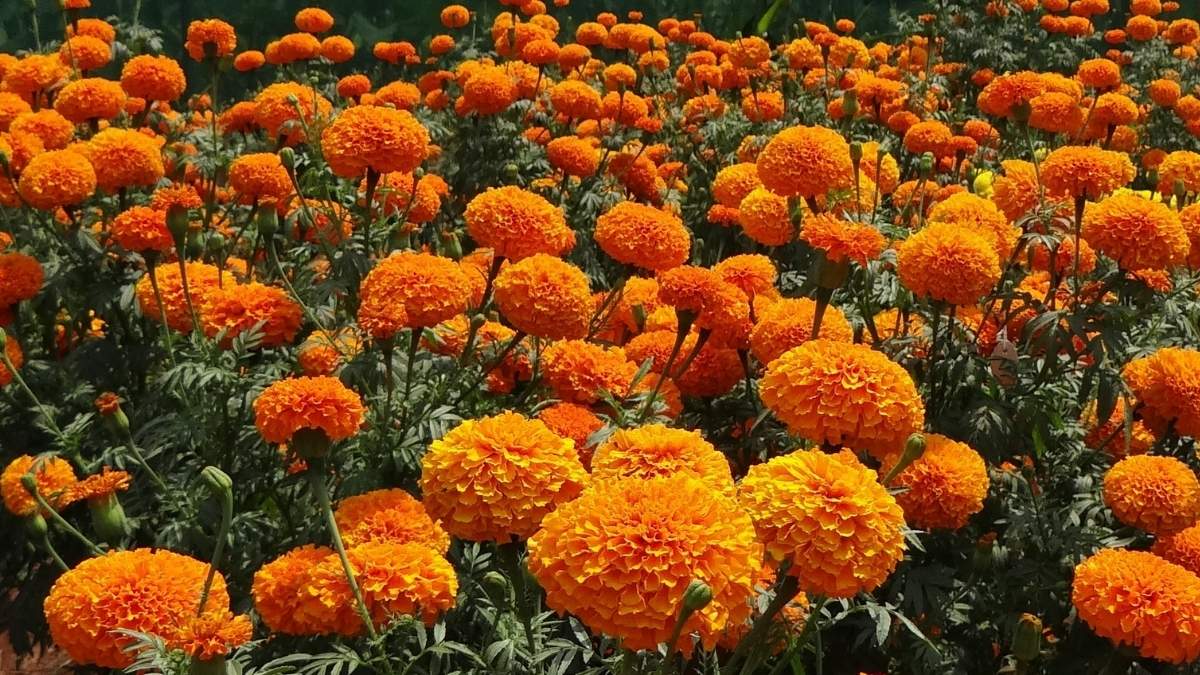
As the air turns crisp and leaves adorn the landscape with warm hues, October unveils a flower that exudes an air of mystery and allure – the Marigold. With its vibrant colors and intriguing folklore, the Marigold stands as a symbol of beauty, protection, and the enchantment of autumn. Here is what you need to know about October’s birth flower.
The Marigold, scientifically known as Tagetes, graces October with its mysterious presence. This versatile flower captivates with its vibrant petals and distinct fragrance. From fiery oranges and yellows to warm reds and bi-color varieties, the Marigold adds a touch of autumnal splendor to gardens and floral displays.
The Allure of the Marigold:
The Marigold exudes an irresistible allure that captivates both the eyes and the senses. Its intricate, daisy-like blooms boast layers of vibrant petals that create a mesmerizing effect. The distinct scent of Marigolds adds to their enchantment, filling the air with a hint of mystery and nostalgia. Whether used in borders, pots, or bouquets, the Marigold brings a sense of warmth and charm to any setting.
Symbolism and Meanings:
Marigolds hold symbolic meanings that reflect their captivating presence. These flowers are often associated with joy, passion, and creativity. In some cultures, Marigolds are believed to bring good luck and protect against negative energies. They are also associated with celebrations and festivals, symbolizing abundance and the spirit of gratitude. Additionally, Marigolds have been used in traditional medicine for their believed healing properties.
Cultural Significance and Traditions:
Marigolds have cultural significance and play a role in various traditions around the world. In Mexican culture, Marigolds are prominently featured in the Day of the Dead celebrations, where they are used to honor and remember departed loved ones. In India, Marigolds are considered sacred flowers and are used in religious ceremonies and decorations. Their vibrant colors and rich symbolism make Marigolds an integral part of cultural festivities.
Botanical Marvels and Varieties:
The world of Marigolds is filled with botanical marvels, showcasing a wide range of species and cultivars. From the African Marigold (Tagetes erecta) with its large, showy flowers to the French Marigold (Tagetes patula) known for its compact size and diverse color palette, each variety offers its own unique charm. Marigolds are known for their resilience and ability to thrive in various climates, making them a popular choice for both novice and experienced gardeners.
Cultivating Marigolds: Gardening Tips and Techniques:
Cultivating Marigolds in your own garden allows you to embrace their mystical beauty. These flowers thrive in well-drained soil and prefer a sunny location. Starting Marigold seeds indoors or directly sowing them in the garden during spring ensures a bountiful display of blooms in the fall. Regular watering, deadheading spent flowers, and providing adequate spacing allow Marigolds to flourish and continue blooming until the first frost.
11. November birth flower: The Warmth of Chrysanthemums
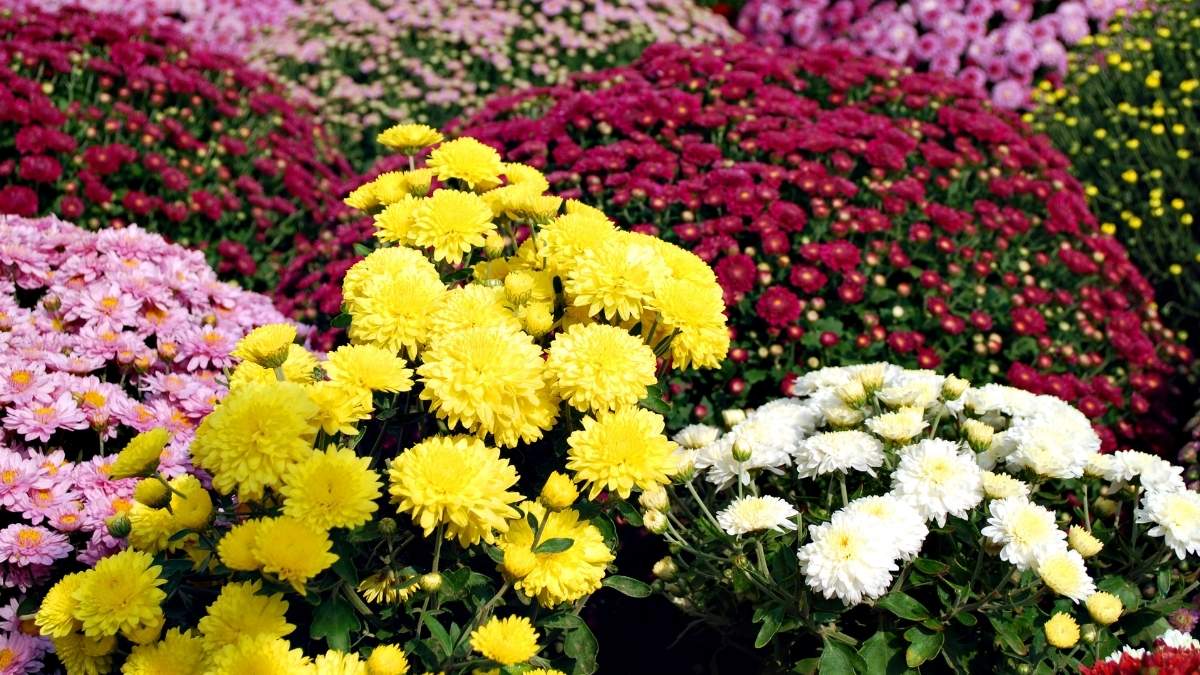
As the autumn leaves gracefully fall and the air carries a hint of crispness, November introduces a flower that radiates warmth and beauty – the Chrysanthemum. With its rich colors and cultural significance, the Chrysanthemum stands as a symbol of friendship, gratitude, and the cozy embrace of fall. Here is the significance, symbolism, and captivating allure of November’s birth flower.
The Chrysanthemum, scientifically known as the Chrysanthemum genus, graces November with its warm and inviting presence. This versatile flower captivates with its abundant petals and vibrant hues. From fiery oranges and deep reds to soft yellows and whites, the Chrysanthemum adds a touch of splendor and comfort to gardens and floral displays during the transition into the colder months.
The Splendor of Chrysanthemums:
The Chrysanthemum showcases an exquisite splendor that captures the essence of autumn. Its multiple layers of petals form lush, domed blooms in a variety of shapes and sizes, including pompoms, daisies, and spiders. The diverse color palette of Chrysanthemums creates a visual symphony, evoking feelings of warmth and coziness.
Symbolism and Meanings:
Chrysanthemums hold symbolic meanings that reflect their captivating presence. These flowers are often associated with friendship, joy, and longevity. In many cultures, Chrysanthemums represent optimism and positivity, making them popular gifts for expressing well wishes and gratitude. In Eastern cultures, Chrysanthemums are revered symbols of autumn and are linked to the concepts of harmony and balance.
Cultural Significance and Traditions:
Chrysanthemums have deep cultural significance and play a prominent role in various traditions around the world. In countries such as Japan and China, Chrysanthemums are celebrated during festivals dedicated to these blooms. The Japanese Festival of Happiness, known as “Choyo-no-Sekku,” honors the beauty and endurance of Chrysanthemums. In some European countries, Chrysanthemums are associated with honoring the deceased and are commonly placed on graves during the Day of the Dead.
Botanical Marvels and Varieties:
The world of Chrysanthemums is filled with botanical marvels, showcasing an extensive range of species and cultivars. From the large-flowered exhibition types to the charming and delicate spray varieties, Chrysanthemums offer a stunning array of choices. Each variety possesses its own unique charm, from the vivid blooms of the Spider Chrysanthemums to the tightly clustered petals of the Cushion Chrysanthemums. With their versatility and captivating beauty, Chrysanthemums make a statement in both garden landscapes and floral arrangements.
Cultivating Chrysanthemums: Gardening Tips and Techniques:
Cultivating Chrysanthemums in your own garden allows you to experience their warm and inviting beauty firsthand. These flowers thrive in well-drained soil and prefer a sunny location. Starting Chrysanthemum plants in early spring or late summer ensures a bountiful display of blooms in November. Regular watering, proper spacing, and pinching back the plants encourage bushy growth and abundant flower production.
12. December birth flower: The Holly’s Festive Spirit

As winter paints the world in frosty hues and holiday cheer fills the air, December unveils a symbol of joy and tradition – the Holly. With its vibrant berries and evergreen leaves, the Holly stands as a representation of festive spirit, hope, and the magic of the holiday season. Let’s see the enchanting allure of December’s birth flower.
The Holly, scientifically known as Ilex, graces December with its festive presence. This iconic evergreen plant captures attention with its glossy, spiky leaves and clusters of bright red berries. From wreaths and decorations to folklore and symbolism, the Holly adds a touch of magic and traditional charm to the holiday season.
The Beauty of Holly:
The Holly showcases a timeless beauty that evokes a sense of winter enchantment. Its glossy, dark green leaves provide a striking contrast against the backdrop of snow and bring a touch of life to the winter landscape. The clusters of vibrant red berries that adorn the branches create a visual spectacle, adding a pop of color and symbolizing the warmth of the season.
Symbolism and Meanings:
Holly holds symbolic meanings that reflect its significance during the holiday season. It is often associated with joy, hope, and protection. The sharp spines on the leaves are believed to ward off evil spirits, while the bright red berries represent life and vitality in the midst of winter’s dormancy. Holly also symbolizes love and harmony, serving as a reminder of the importance of togetherness during festive celebrations.
Cultural Significance and Traditions:
Holly has deep cultural significance and plays a prominent role in various holiday traditions. In many cultures, it is used to decorate homes, churches, and public spaces during the Christmas season. Holly wreaths and garlands are often hung as a symbol of welcome and good fortune. Additionally, the association of Holly with the winter solstice and the rebirth of the sun has led to its inclusion in ancient and modern winter celebrations.
Botanical Marvels and Varieties:
The world of Holly encompasses various species and cultivars, each showcasing its own botanical marvels. From the American Holly (Ilex opaca) with its classic spiky leaves and bright red berries to the English Holly (Ilex aquifolium), known for its glossy foliage, the diverse varieties of Holly offer a range of choices for both ornamental and practical purposes. Some species are dioecious, meaning separate male and female plants are needed for berry production, adding an element of fascination to their cultivation.
Cultivating Holly: Gardening Tips and Techniques:
Cultivating Holly in your own garden allows you to bring the festive spirit to your outdoor space. These evergreen plants thrive in well-drained soil and prefer a sunny to partially shaded location. Proper pruning and shaping help maintain the desired form and encourage abundant berry production. It’s important to select the appropriate Holly variety based on your climate and ensure proper spacing for optimal growth.
December’s birth flower, the Holly, embodies the festive spirit and brings a touch of magic to the holiday season. Its evergreen leaves, vibrant berries, and rich symbolism serve as a reminder of joy, hope, and the traditions that make this time of year truly special.
Conclusion
The Holly stands as a beloved symbol of the holiday season, embodying the festive spirit and captivating hearts with its beauty and rich symbolism. As December unfolds, the vibrant red berries and glossy evergreen leaves of the Holly bring joy, hope, and a touch of magic to our homes and celebrations.
Through centuries of tradition and cultural significance, the Holly has become intertwined with our collective memories and cherished festivities. Its sharp spines guard against negative energies, while its bright berries symbolize the vitality and warmth that reside even in the coldest of seasons. From adorning wreaths and garlands to be a centerpiece in decorations, the Holly adds a timeless touch to our surroundings, reminding us of the importance of togetherness and the joy of giving.
As we gather with loved ones and exchange gifts during this cherished time, the Holly serves as a reminder of the precious moments shared and the blessings we hold dear. Its presence, both in nature and in our homes, evokes a sense of wonder and the anticipation of merriment. Holly’s festive spirit is a testament to the resilience of life and the promise of renewal, inspiring us to embrace the joyous moments and cultivate a sense of gratitude in our hearts.
